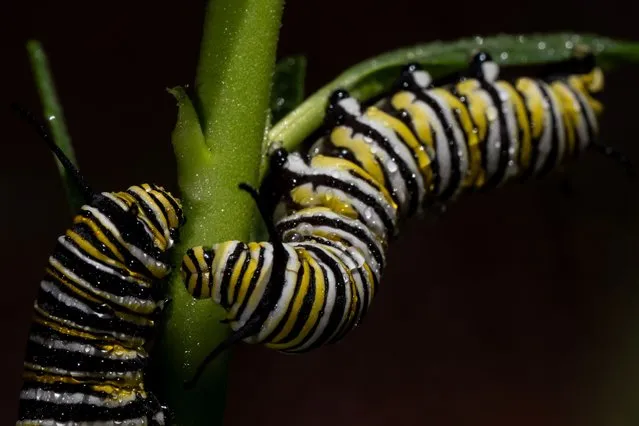
Monarch butterfly caterpillars are feeding on a swan plant in Lincoln, New Zealand, on January 26, 2024. Monarch butterflies are New Zealand's largest butterflies and have been present since the late 1800s. (Photo by Sanka Vidanagama/NurPhoto/Rex Features/Shutterstock)
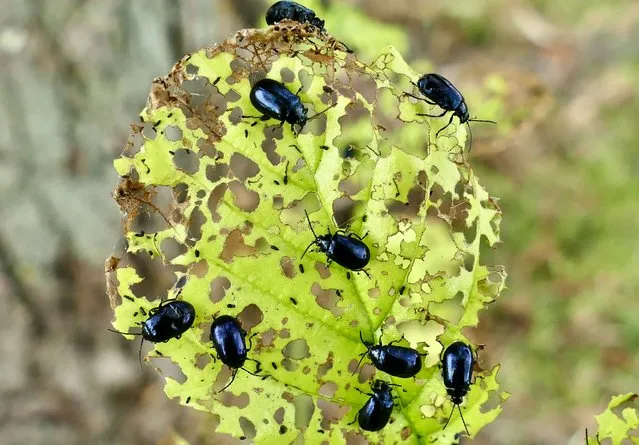
Flea beetles eat their way through leaves near the riverbank in Oxfordshire, Henley-on-Thames, United Kingdom on September 3, 2021. (Photo by Geoffrey Swaine/Rex Features/Shutterstock)
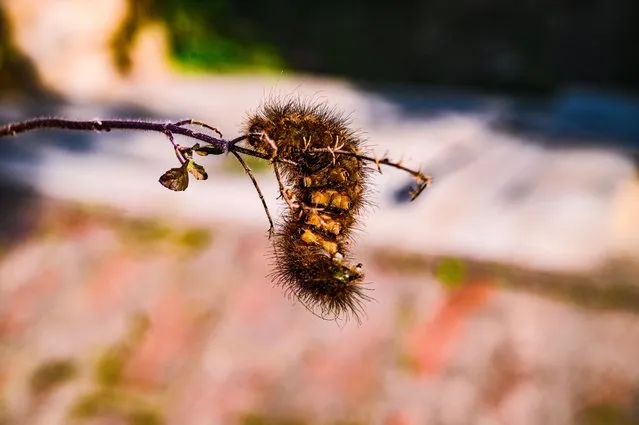
A fuzzy caterpillar on a basil plant in west Bengal, India on December 25, 2023. The caterpillar’s defence system is its hair, which has microscopic barbs that break off easily in the skin of would-be predators. (Photo by Soumyabrata Roy/NurPhoto/Rex Features/Shutterstock)
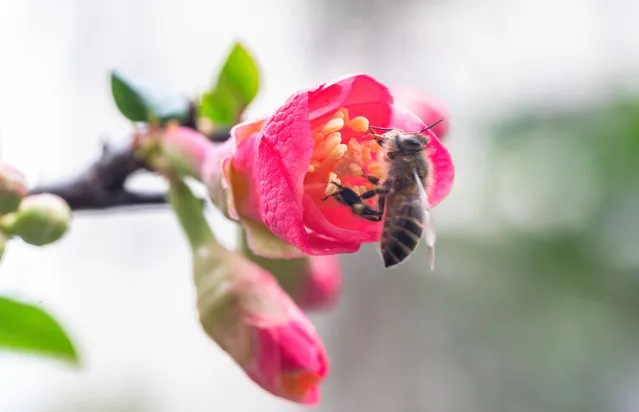
A bee is feeding on nectar from a crabapple flower in Chongqing, China, on January 3, 2024. (Photo by Costfoto/NurPhoto/Rex Features/Shutterstock)
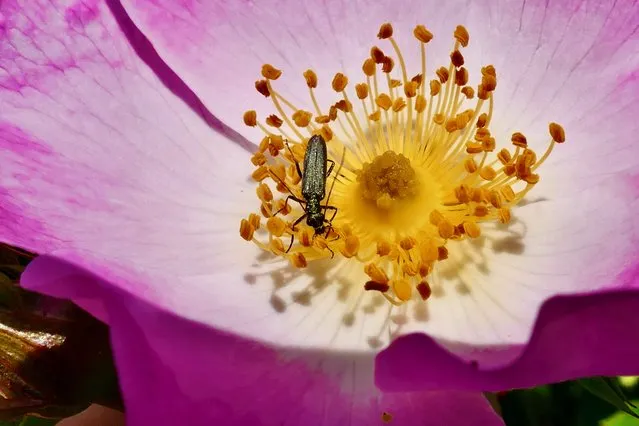
A false oil, or thick-legged, flower beetle rests on wild rose petals in the afternoon sunshine in Dunsden, UK on June 1, 2023. (Photo by Geoffrey Swaine/Rex Features/Shutterstock)
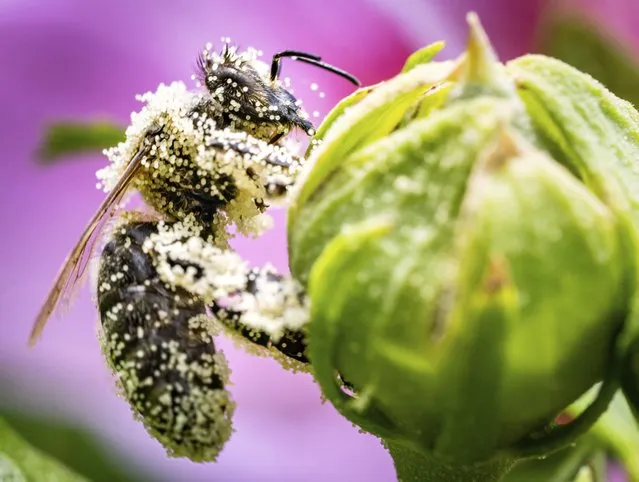
A bee covered with pollen rests on the bud of a hibiscus bush in a Frankfurt garden. in Frankfurt, Germany, Monday, July 25, 2022. (Photo by Frank Rumpenhorst/dpa via AP Photo)
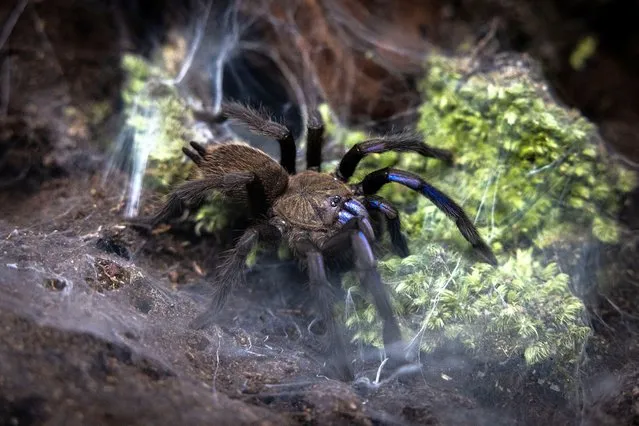
A newly discovered Electric-Blue Tarantula sits in a display case at the Insectarium workshop gallery at Khon Kaen University on September 27, 2023 in Khon Kaen, Thailand. The Electric-Blue Tarantula, scientifically known as Chilobrachys Natanicharum, was discovered by Khon Kaen University researchers and Thai YouTube star, JoCho Sippawat. The Electric-Blue Tarantula gets its name from the shimmering blue color that the tarantula reflects when exposed to light, one of the more rare colors found in nature. This discovery is the first new tarantula found in Thailand in 27 years. (Photo by Lauren DeCicca/Getty Images)
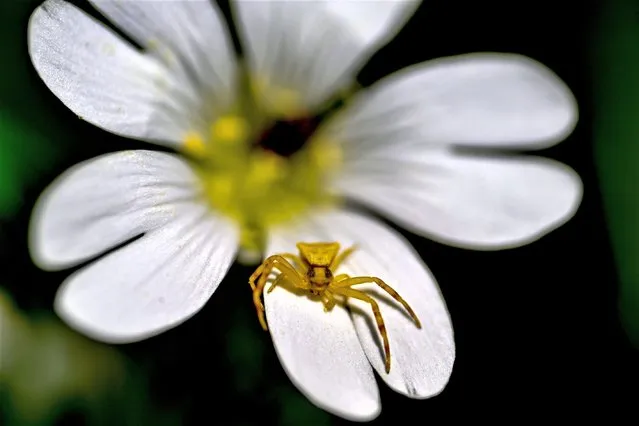
A thomisidae (crab spider) is on a flower as air temperature increases at Botanik Park, in Ankara, Turkiye on May 16, 2023. (Photo by Mustafa Ciftci/Anadolu Agency via Getty Images)
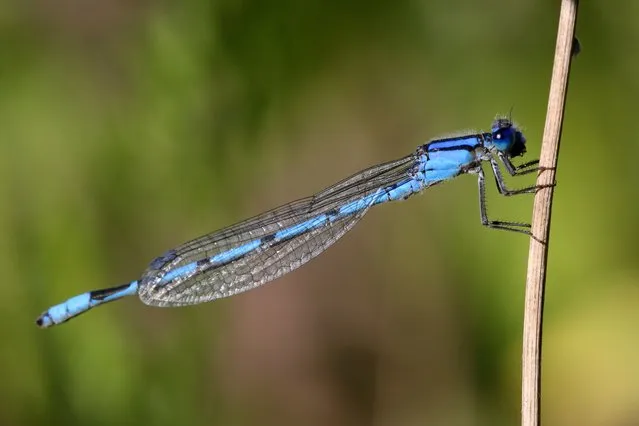
Damselfly (Nehalennia) in Markham, Ontario, Canada, on July 14, 2022. (Photo by Creative Touch Imaging Ltd./NurPhoto via Getty Images)
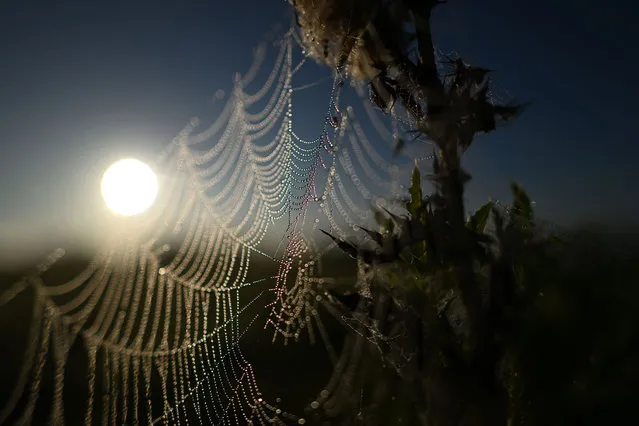
Detailed view of a spiders web at RSPB Exminster and Powderham Marshes on August 16, 2023 in Exeter, United Kingdom. (Photo by Harry Trump/Getty Images)
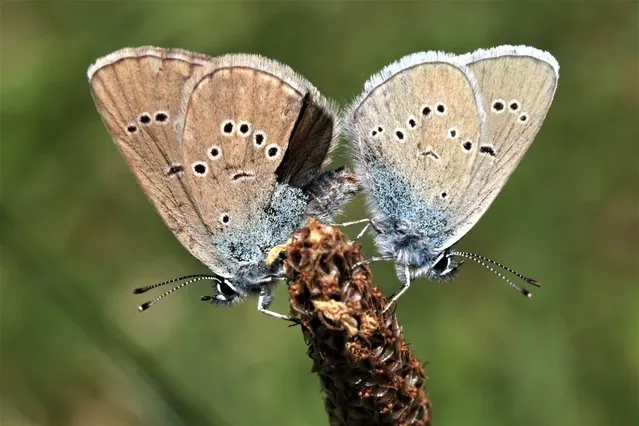
A pair of Mazarine blue (Cyaniris semiargus) butterflies mate on a Tyrolean alpine meadow on June 25, 2023 near Innervals, Austria. An initiative called Viel-Falter, lead by the University of Innsbruck, is operating a nationwide monitoring program that combines scientific and volunteer data collection on Austria's butterfly and moth populations. The data serves as an indicator to assess the state of biodiversity across the country, which, like elsewhere across Europe, is in steep decline. Human intrusion, through agriculture, water diversion, urban sprawl, construction and other activities that destroy natural habitats, has caused the decline, and climate change is becoming an increasing threat, especially in Alpine regions, which are warming twice as fast as the global average. The European Parliament is currently considering the EU Nature Restoration Law that includes the aim of restoring natural habitats. (Photo by Sean Gallup/Getty Images)
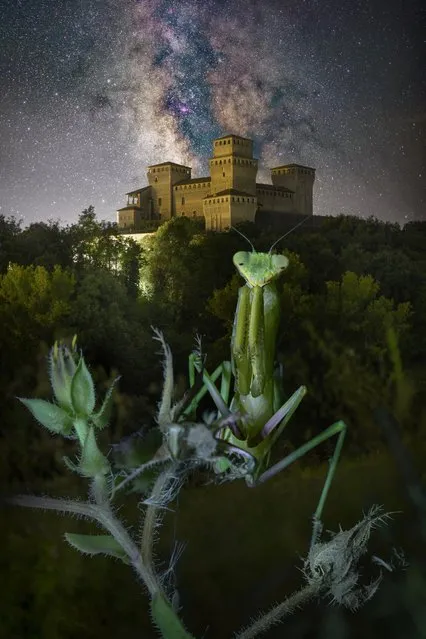
A praying mantis stares into the lens as it is framed by the stars and Torrechiara Castle in Parma, Italy early September 2023. (Photo by Alberto Ghizzi Panizza/Animal News Agency)
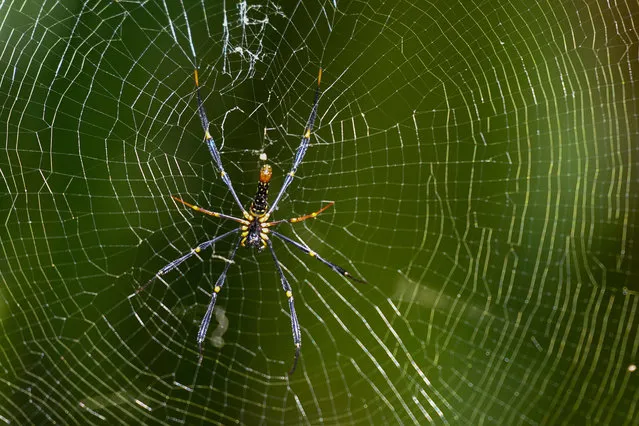
A spider builds its web in a swamp at Pasir Ris park in Singapore on January 19, 2023. (Photo by Roslan Rahman/AFP Photo)
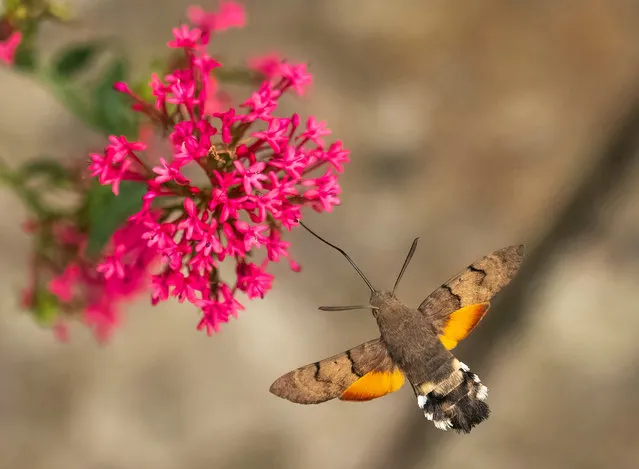
It has taken wildlife photographer Andrew Fusek Peters 4 years to finally catch these stunning shoto in August 2022 of a hummingbird hawkmoth with fully spread wings in his garden nectaring on valerian. This moth beats its wings 80 times a second, so fast that it emits an audible hum – to freeze the motion took a shutter speed of 1/12800 of a second. Due to the very hot summer, this has been one of the best ever years for this migrant from the continent which is now suspected to be breeding here. (Photo by Andrew Fusek Peters/South West News Service)
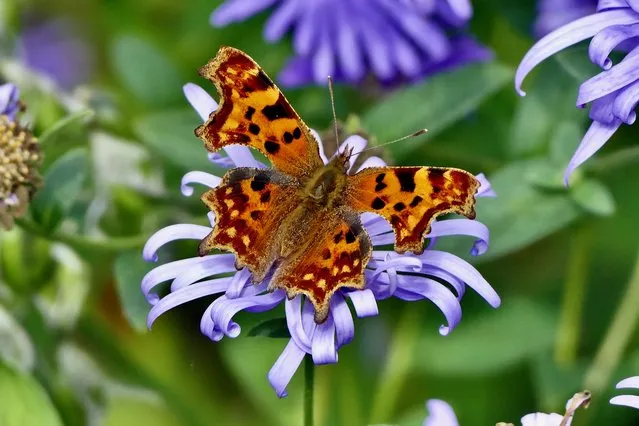
A Comma butterfly (Polygonia c-album) in Berkshire on February 26, 2022. Butterfly sighting in the United Kingdom fell last year, every listed species was down some by almost half. The cause of the decline was loss of land for the insects to lay their eggs and also due to the use of chemicals and the pollution it brings. People have been urged to plant butterfly attracting flowers and plants in their gardens to encourage the insects. (Photo by Geoffrey Swaine/Rex Features/Shutterstock)
09 Feb 2024 10:47:00,
post received
0 comments
